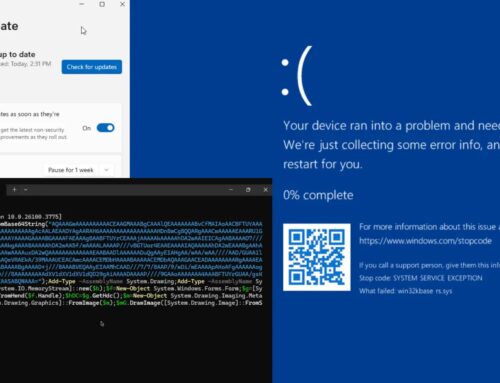
Chinese Firms Linked to Silk Typhoon Filed 15+ Patents for Cyber Espionage Tools
Unmasking Silk Typhoon: Chinese Firms’ Patent Hoard Reveals State-Sponsored Cyber Espionage Tools
The digital shadows cast by state-sponsored hacking groups often obscure their origins and methodologies. However, recent revelations concerning Chinese companies linked to the notorious Silk Typhoon (also known as Hafnium) group have pulled back the curtain, exposing a sophisticated ecosystem of cyber contracting. These firms have been identified as the patentees behind over a dozen advanced technology patents for cyber espionage tools, offering a chilling glimpse into the offensive capabilities fueling such operations.
This discovery, as reported by The Hacker News, underscores a critical shift: the commoditization and industrialization of offensive cyber capabilities. It highlights a troubling nexus between seemingly legitimate corporate entities and state-sponsored cyber warfare.
The Operational Link: Silk Typhoon and Its Cyber Arsenal
Silk Typhoon, or Hafnium, is a state-sponsored advanced persistent threat (APT) group with a long history of high-profile cyberattacks, notably attributed to the Chinese government. Their operations often target critical infrastructure, government entities, and organizations dealing with sensitive data. The identification of patents tied to companies associated with this group clarifies the development arm supporting their nefarious activities.
This isn’t merely about individual hackers; it points to a structured, resourced approach to developing zero-day exploits and sophisticated intrusion tools. The patents essentially detail the blueprints for the very weapons used in wide-ranging espionage campaigns.
Patented Prowess: Forensic and Intrusion Capabilities
The patents granted to these Chinese firms cover a disturbing array of cyber tools. These aren’t just generic hacking utilities; they represent highly specialized capabilities designed for deep system access and data exfiltration. Key areas of focus include:
- Encrypted Endpoint Data Collection: Tools designed to bypass encryption mechanisms on endpoint devices, allowing for the collection of sensitive data that would otherwise be protected. This capability is crucial for exfiltrating intelligence from target systems even when data-at-rest encryption is employed.
- Apple Device Forensics: Specific methodologies and tools for forensic analysis and data extraction from Apple devices (iPhones, iPads, Macs). Given the increasing prevalence of Apple products in enterprise and government environments, this capability provides a significant advantage for espionage operations targeting high-value individuals or organizations.
- Remote Access and Persistence: Techniques for establishing and maintaining covert remote access to compromised systems, ensuring continued surveillance and data exfiltration. These tools likely include sophisticated command-and-control (C2) frameworks capable of evading detection and operating with stealth.
While no specific CVEs have been directly attributed to these patented tools as vulnerabilities, their existence implies a proactive development of offensive capabilities that could exploit future or undiscovered vulnerabilities. For instance, the ability to perform Apple device forensics suggests an intimate understanding of iOS and macOS security mechanisms, potentially leveraging previously unknown weaknesses to gain access.
The Shadowy Cyber Contracting Ecosystem
The connection between these patents and state-sponsored groups like Silk Typhoon exposes a critical facet of modern cyber warfare: the rise of the cyber contracting ecosystem. Governments are increasingly outsourcing the development of offensive cyber tools to private companies, creating a burgeoning industry shrouded in secrecy. This model offers several benefits to nation-states:
- Plausible Deniability: Attributing attacks becomes significantly harder when the tools are developed by private entities, even if loosely affiliated with state actors.
- Access to Talent: Private firms can often attract top cybersecurity talent that might be hesitant to work directly for government intelligence agencies.
- Rapid Development: The competitive nature of the private sector can accelerate the development of sophisticated tools.
This creates a complex supply chain for cyber weapons, where seemingly legitimate businesses may be contributing to global cyber instability and espionage efforts. It complicates international efforts to regulate cyber arms and hold responsible parties accountable.
Remediation Actions and Defensive Posture
Understanding the capabilities of groups like Silk Typhoon, amplified by patented tools, is crucial for organizations to bolster their defenses. While specific tools aren’t directly remediable, the capabilities they represent demand a robust security posture:
- Advanced Endpoint Detection and Response (EDR): Implement EDR solutions capable of detecting anomalous behavior, fileless malware, and sophisticated C2 communications, especially on encrypted endpoints. Focus on behavioral analysis over signature-based detection.
- Mobile Device Management (MDM) and Security: For Apple devices, ensure robust MDM policies are enforced, including regular patching, configuration hardening, and secure app deployment. Consider mobile threat defense (MTD) solutions to detect compromises specific to iOS and macOS.
- Regular Patch Management: Maintain a rigorous patch management program across all systems, including operating systems, applications, and network devices. Exploits often target known vulnerabilities that remain unpatched.
- Network Segmentation: Segment networks to limit lateral movement if an intrusion occurs. This can contain breaches and prevent attackers from reaching high-value assets.
- Principle of Least Privilege: Enforce the principle of least privilege for all users and systems, minimizing the potential impact of a compromised account or machine.
- Threat Intelligence Integration: Subscribe to and integrate high-quality threat intelligence feeds that provide insights into APT attack methodologies, TTPs (Tactics, Techniques, and Procedures), and indicators of compromise (IoCs) associated with groups like Silk Typhoon.
- User Awareness Training: Educate employees about social engineering, phishing, and other common initial access vectors used by sophisticated adversaries.
Tools for Enhanced Security
| Tool Name | Purpose | Link |
|---|---|---|
| CrowdStrike Falcon Insight | Comprehensive EDR for endpoint protection and threat detection. | https://www.crowdstrike.com/products/endpoint-security/falcon-insight-edr/ |
| Microsoft Defender for Endpoint | Integrated endpoint protection platform with EDR capabilities. | https://www.microsoft.com/en-us/security/business/endpoint-security/microsoft-defender-for-endpoint |
| JAMF Pro | MDM solution for Apple devices, enabling security policy enforcement. | https://www.jamf.com/products/jamf-pro/ |
| Zscaler Mobile Protection | Mobile Threat Defense (MTD) for iOS and Android devices. | https://www.zscaler.com/solutions/mobile-security |
| Tenable Nessus | Vulnerability scanning to identify unpatched systems and misconfigurations. | https://www.tenable.com/products/nessus |
Conclusion: The Industrialization of Cyber Warfare
The revelation that Chinese firms linked to Silk Typhoon have patented advanced cyber espionage tools is a stark reminder of the escalating complexity and industrialization of state-sponsored cyber warfare. It underscores a global shift where offensive cyber capabilities are not merely developed in secret government labs but are increasingly a product of a sophisticated, albeit shadowy, commercial ecosystem.
For cybersecurity professionals, this intelligence is invaluable. It reinforces the need for deep defensive strategies that go beyond traditional perimeter security, focusing instead on comprehensive endpoint detection, robust mobile security, and continuous threat intelligence. As the lines between state and private actors blur, understanding the tools and tactics of these advanced adversaries is paramount to defending our digital frontiers.





